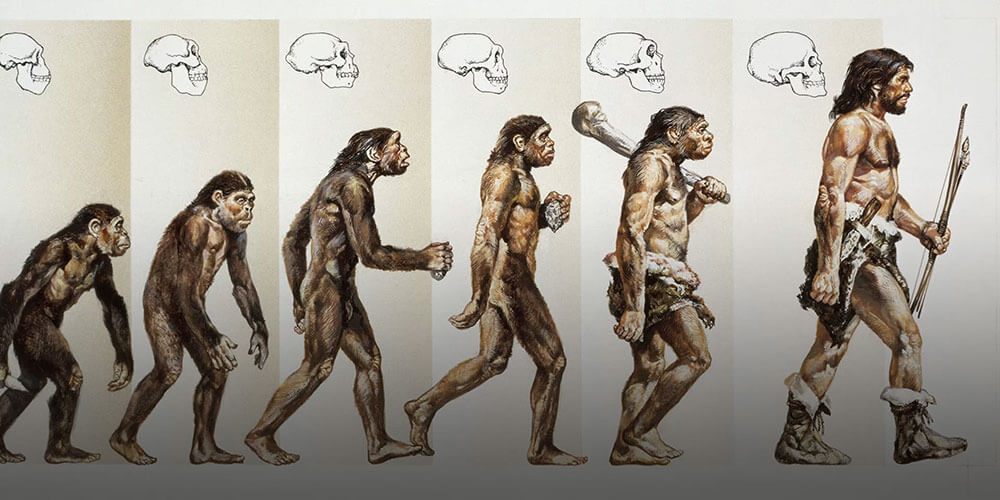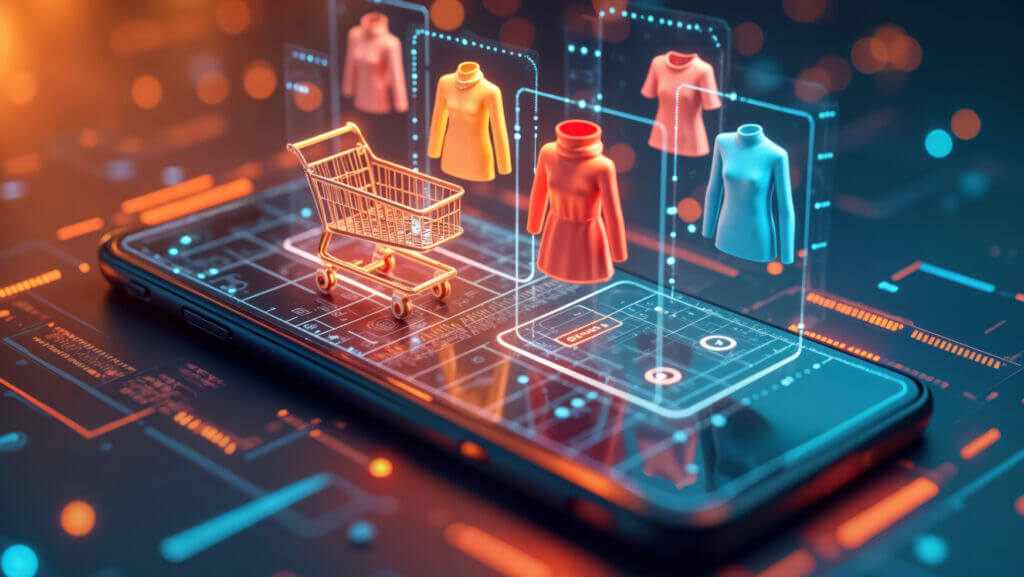2026 Digital Marketing Outlook: What Businesses Need to Know

The digital marketing playbook is being rewritten. This is no joke. Many remember Google's Panda Update, which dropped thousands of sites from search overnight and led to the collapse of numerous digital-first businesses.
For businesses that have relied on traditional search engine optimization, paid advertising, and third-party data, 2026 represents a watershed moment. The convergence of artificial intelligence, evolving privacy regulations, and fundamental shifts in consumer behavior is creating what industry experts call "The Great Reset" of digital marketing.
This isn't incremental change—it's transformation. Understanding and adapting to these shifts will determine which businesses thrive and which become invisible in the new digital landscape.
Gartner Predicts Traditional Search Volume will Drop 25% by 2026
This shift fundamentally changes how businesses must think about discoverability as AI chatbots and answer engines absorb more queries.
Traditional SEO focused on ranking websites in search results. But nearly two-thirds of Google searches now end without a click to any website. Users are getting answers directly from AI-powered platforms like ChatGPT, Google's AI Overviews, Perplexity, and Claude—a phenomenon requiring an entirely new optimization approach called Answer Engine Optimization (AEO).
What AEO Means for Your Business
Over 400 million people use OpenAI products each week, and downloads for Bing's mobile app grew four times after integrating AI. These aren't fringe platforms—they're becoming primary research tools for consumers and B2B buyers alike.
The goal shifts from driving clicks to becoming the authoritative source that AI engines cite. In this post-search world, businesses must optimize not just for humans, but for the AI models that mediate information.
Practical AEO Strategies:
Structure content around questions. Content must reflect not just keywords but context—who's asking, what stage they're in, and what barriers they face. Create FAQ sections, use natural conversational language, and directly answer common customer queries.
Implement schema markup and structured data. This helps AI systems understand and extract information from your content. Focus on FAQ schema, How-To schema, and Product schema to maximize visibility in AI-generated answers.
Build E-E-A-T signals. GenAI models prefer content that meets Experience, Expertise, Authoritativeness, and Trustworthiness criteria. This means original research, expert authorship, credible citations, and authentic experience sharing—not AI-generated commodity content.
Optimize for zero-click scenarios. Queries with AI Overviews are seeing a 15.5% drop in traditional organic click-through rates. Your website must act more like a knowledge base, providing upfront value even if users never click through.
The Battle for Commerce Control

Perhaps no area illustrates the 2026 transformation more dramatically than the emergence of AI-powered shopping assistants. Major platforms are racing to control the new "agent layer" of commerce—and the implications for businesses are profound.
The New Shopping Gatekeepers
Amazon's Rufus AI assistant is projected to indirectly contribute $700 million in operating profits this year, demonstrating how seriously retailers are betting on conversational commerce. Google announced new AI shopping features including a conversational shopping experience in AI Mode with visual guidance and product data, plus a "try it on" feature and agentic checkout capabilities.
Meanwhile, OpenAI launched "Instant Checkout" allowing ChatGPT users to make purchases from Etsy and over 1 million Shopify merchants directly within conversations. Walmart integrated its Sparky assistant with ChatGPT, enabling users to discover and purchase products without visiting Walmart's website.
This frictionless experience has the potential to move shopping away from search engines like Google and e-commerce platforms like Amazon toward conversational agents with curated recommendations and easy checkout experiences.
The New Shelf Space for Retailers: A Paradigmatic Shift
For brands, AI assistants represent the new shelf space, where visibility is no longer about ranking high but about being reasoned into recommendation. The retail battlefield is shifting from shelf space to recommendation space.
Amazon has updated its website code to block AI agents from competitors, including Google, Perplexity, Anthropic, and OpenAI, underscoring the high stakes of this transformation. One analyst noted that the product discovery funnel is collapsing as consumers integrate AI into their shopping experience, forcing everyone positioned to make money along that discovery path to see their business model change.
How to Optimize for AI Shopping:
Provide precise, structured product data. Feed accurate pricing, availability, detailed attributes, and authentic reviews that AI systems can interpret and recommend.
Use natural language in product descriptions. Align copy with how consumers actually ask questions. Instead of keyword-stuffed descriptions, write conversationally about product benefits and use cases.
Build trustworthy signals. Reviews, ratings, return policies, and transparent business practices help AI systems determine which products to recommend.
Track AI influence. Monitor where AI recommendations drive discovery and conversion, not just traditional click-through metrics.
The AI Marketing Automation Explosion
Reuters reports that Meta aims to automate advertising fully with AI by 2026. This isn't hyperbole—it reflects how deeply AI is embedding itself into every marketing function.
AI's Transformative Applications
AI integration enables predictive intent modeling that analyzes patterns to predict customer needs ahead of time, automated campaign optimization that adjusts budgets and targeting while you sleep, and AI-powered creative testing that generates and tests dozens of ad variations.
As of 2025, 94% of marketers report using generative AI in their workflows, with 34% using it for copywriting, 25% for image generation, and another 25% for creative versioning.

The Content Inflation Crisis
But there's a critical warning: projections show five times more content in 2026 than in 2023, creating a content tsunami. Gartner now places GenAI in the Trough of Disillusionment, and many marketers are realizing that AI-automated content is often too generic to gain engagement or cut through search and social media algorithms.
We're fed up with AI-generated and automated fakeness, tired of fast-paced microtrends, and moving toward intentional content that feels real and authentic. The solution? Use AI for efficiency but maintain human creativity, authentic voice, and original perspectives.
Strategic AI Implementation:
Use AI for first drafts, research, and data analysis—then have humans refine for strategy, tone, and authenticity. Focus on generating authentic copy and video by micro and employee influencers rather than generic automated content.
Privacy-First Marketing and First-Party Data
2026 is shaping up to be a defining year for data privacy, with updates to GDPR, new U.S. state laws, and expanding APAC regulations tightening global standards. Third-party tracking is essentially gone, forcing a fundamental strategy shift.
The First-Party Data Imperative
Studies show brands using first-party data see up to 8× return on ad spend and 25% lower cost per acquisition, while first-party behavioral data can improve customer acquisition costs by 83% and boost ROI by 72%.
Companies using first-party data for key marketing functions can achieve a revenue lift of 1.5X to 2.9X compared to brands who don't. But trust matters: 55% of consumers in some markets say that a brand's ability to protect their personal data affects how much they trust it.
Building Your First-Party Data Strategy:
Create value exchange. Focus on creating value-added experiences like exclusive content, tools, or services that encourage consumers to willingly share their data.
Progressive data collection. Don't demand everything upfront. Build profiles gradually through surveys, preference centers, and interactive experiences.
Transparent practices. Over 90% of consumers prefer brands with clear data practices. Be explicit about what you collect and how it benefits customers.
Integrate your data. By 2026, CRMs will turn into potent decision-making tools with AI integration, predictive analysis, and emphasis on personalized experiences.
Social Media: The New Search and Commerce Engine
45% of Millennials use social media for search, and social media in 2026 isn't just about brand awareness—it's a growth engine across the full funnel from first touchpoint to final conversion.
Platform Evolution
Threads is on track to overtake X in total users, adding around 50 million users every four months. TikTok, Instagram Reels, and LinkedIn have become search engines, content platforms, and conversion paths simultaneously.
Short-form video is the top content type for ROI, with 21% of marketers reporting it delivers the best returns. But there's nuance: the more professionally pixel-perfect polished your content is, the more it appears like an ad. Audiences crave authenticity.
Social Strategy for 2026:
Focus on educational and entertaining content that adds value, not just promotional messages. Brands need to behave like creators, producing content that entertains, inspires, and informs.
Leverage employee advocacy and micro-influencers for authentic voices. Use AI to scale production but maintain relatable, human perspectives.
Optimize for platform-specific search behaviors. Each social platform has unique discovery algorithms and user intent patterns.
Staying Ahead: Your 2026 Action Plan

The pace of change can feel overwhelming, but successful adaptation follows clear principles:
Balance your efforts strategically. Split focus with 60-70% on proven short-term tasks that deliver results now, 20% on scaling and maintaining site health, 10% on long-term bets requiring planning and cross-team coordination, and 10% on learning industry changes.
Invest in foundational capabilities. Strong SEO practices support AEO effectiveness. Quality content, technical excellence, and authoritative signals matter across all channels.
Prioritize authenticity over volume. In 2026, audiences want stories that feel real through humanized storytelling that builds trust by focusing on audience-first narratives.
Build omnisearch presence. Don't choose between traditional SEO, AEO, or social—you need visibility across all discovery channels where your customers search.
Create continuous systems. Digital marketing in 2026 is too complex to run on campaign logic alone—you need evergreen systems that adapt and grow as your audience does.
Conclusion: The Transformation Imperative
The digital marketing landscape of 2026 demands more than tactical adjustments—it requires strategic transformation. The winners won't be those with the biggest budgets but those who adapt earliest and most effectively to answer engines, AI shopping, privacy-first data strategies, and authentic content creation.
The brands that lead with transparency and data ethics will stand out as true partners in a cautious market, with compliance evolving from a legal requirement into a competitive advantage.
The opportunity is significant for businesses willing to act now. Early adoption of AEO establishes citation advantages that become increasingly difficult for competitors to overcome. Building first-party data capabilities today creates the foundation for personalization tomorrow. Developing authentic content voices now cuts through the AI-generated noise.
The question isn't whether digital marketing will transform in 2026—it's whether your business will lead the transformation or scramble to catch up. The playbook has been rewritten. It's time to learn the new rules.
